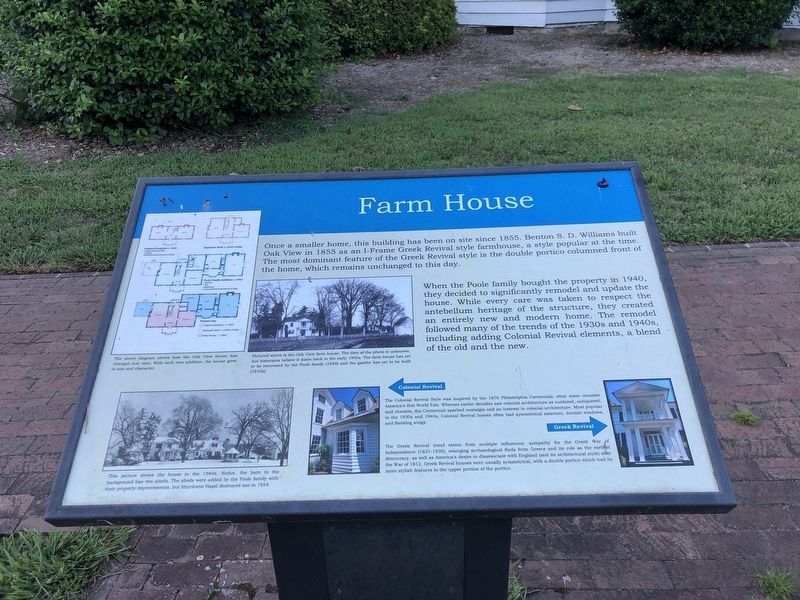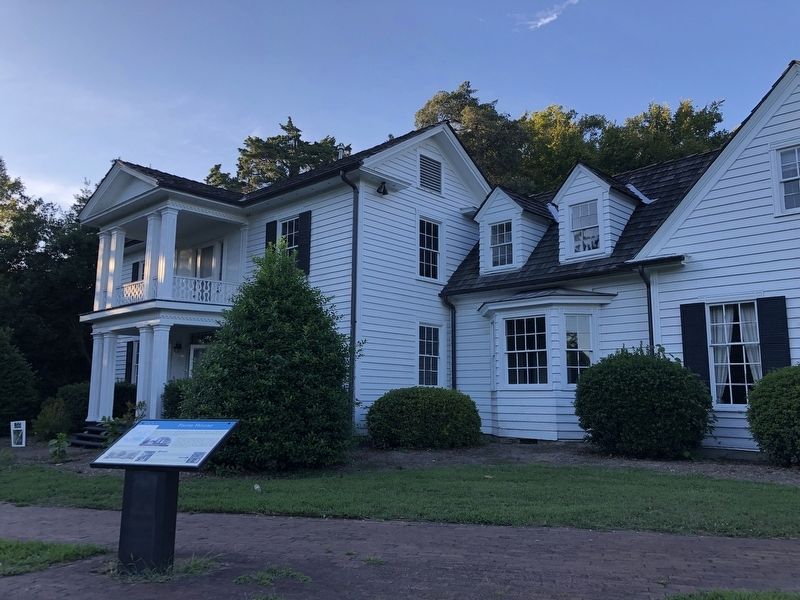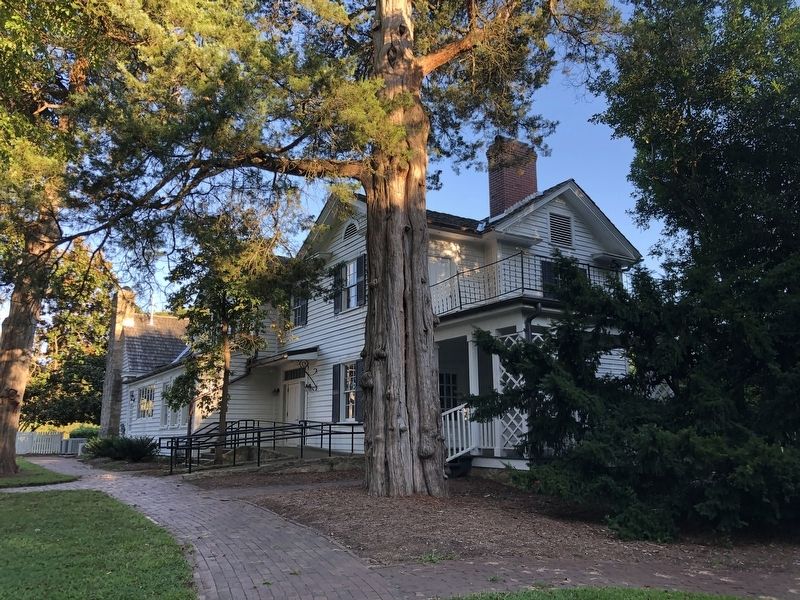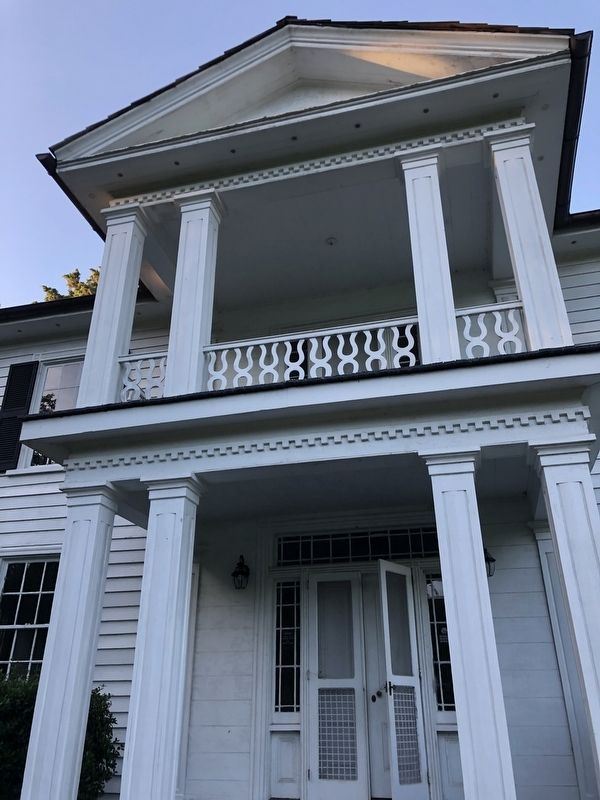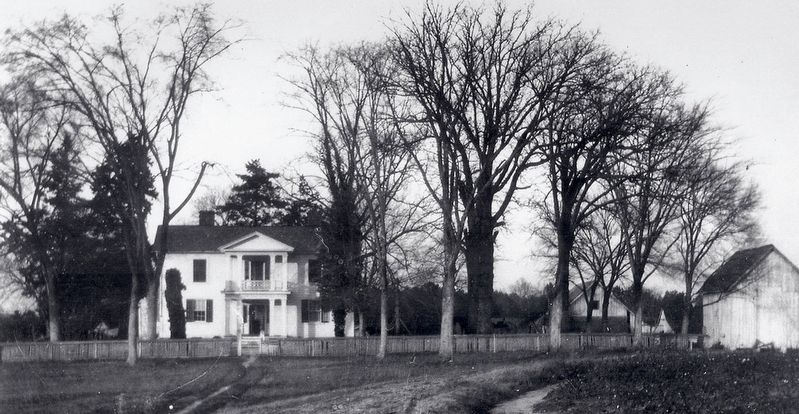Southeast Raleigh in Wake County, North Carolina — The American South (South Atlantic)
Farm House
When the Poole family bought the property in 1940, they decided to significantly remodel and update the house. While every care was taken to respect the antebellum heritage of the structure, they created. an entirely new and modern home. The remodel followed many of the trends of the 1930s and 1940s, including adding Colonial Revival elements, a blend of the old and the new.
[Captions]
Top row, left to right:
• The above diagram shows how the Oak View House has changed over time. With each new addition, the house grew in size and character.
• Pictured above is the Oak View farm house. The date of the photo is unknown, but historians believe it dates back to the early 1900s. The farm house has yet to be renovated by the Poole family (1940) and the gazebo has yet to be built (1910s).
Bottom row, left to right:
• This picture shows the house in the 1940s. Notice, the barn in the background has two sheds. The sheds were added by the Poole family with their property improvements, but Hurricane Hazel destroyed one in 1954.
• Colonial Revival The Colonial Revival style was inspired by the 1876 Philadelphia Centennial, what some consider America's first World's Fair. Whereas earlier decades saw colonial architecture as outdated, antiquated and obsolete, the Centennial sparked nostalgia and an interest in colonial architecture. Most popular in the 1930s and 1940s, Colonial Revival homes often had symmetrical exteriors, dormer windows, and flanking wings.
• Greek Revival The Greek Revival trend stems from multiple influences: sympathy for the Greek War of Independence (1821-1830), emerging archaeological finds from Greece and its role as the earliest democracy, as well as America's desire to disassociate with England (and its architectural style) after the War of 1812. Greek Revival houses were usually symmetrical, with a double portico which had its more stylish features in the upper portion of the portico.
Topics. This historical marker is listed in this topic list: Architecture. A significant historical year for this entry is 1855.
Location. 35° 46.2′ N, 78° 34.342′ W. Marker is in Raleigh, North Carolina, in Wake County. It is in Southeast Raleigh. Marker can be reached from the intersection of Historic Oak View Lane and Carya Drive. Marker is in the Historic Oak View County Park. Touch for map. Marker is at or near this postal address: 4028 Carya Dr, Raleigh NC 27610, United States of America. Touch for directions.
Other nearby markers. At least 8 other markers are within walking distance of this marker. Carriage House (within shouting distance of this marker); Plank Kitchen (within shouting distance of this marker); The Pecan Grove (within shouting distance of this marker); Tenant House (within shouting distance of this marker); Livestock Barn (within shouting distance of this marker); Cotton Gin House (about 300 feet away, measured in a direct line); In the Field (about 300 feet away); I-440 (about 400 feet away). Touch for a list and map of all markers in Raleigh.
Also see . . .
1. Oak View. Benton S. D. Williams named the 930-acre tract he bought in 1853 Oak View, for the four large oak trees that marked the front yard's boundaries. (National Park Service, "Raleigh: A Capital City") (Submitted on September 29, 2023, by Duane and Tracy Marsteller of Murfreesboro, Tennessee.)
2. Oak View (PDF). National Register of Historic Places nomination for the farm site, which was listed in 1991. (Prepared by Kelly A. Lally and Todd Johnson; via National Archives) (Submitted on September 29, 2023, by Duane and Tracy Marsteller of Murfreesboro, Tennessee.)
Credits. This page was last revised on September 29, 2023. It was originally submitted on September 28, 2023, by Duane and Tracy Marsteller of Murfreesboro, Tennessee. This page has been viewed 40 times since then and 5 times this year. Photos: 1, 2, 3, 4. submitted on September 28, 2023, by Duane and Tracy Marsteller of Murfreesboro, Tennessee. 5. submitted on September 29, 2023, by Duane and Tracy Marsteller of Murfreesboro, Tennessee.
